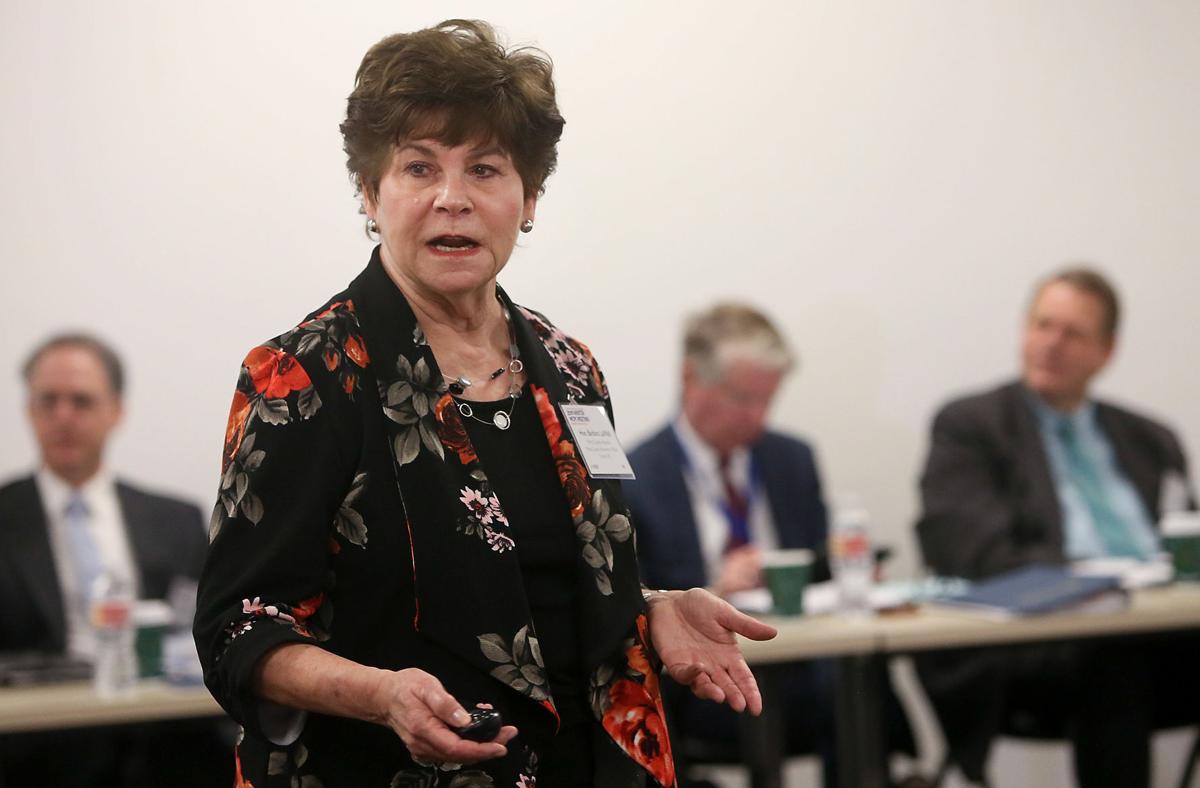Kobe Marshall had a stubborn streak. When he was 16, he was found, along with several others, in the boy’s bathroom at school smoking marijuana.
Marshall said he wasn’t smoking, but he had some marijuana that he intended to smoke after school, and was charged with possession.
Marshall had two options: A year of probation or spend 90 days with the Community Justice Board, a Pima County diversion program that would wipe his record clean.
Pima County Attorney Barbara LaWall created the board in 1998. It has served over 6,000 youth and continues to grow. The 19th location and 11th community justice board will be established in Vail on Oct. 24.
“It was (LaWall’s) vision to have community members address juvenile crime within their neighborhoods,” said Trevor Edwards, a board coordinator. A board is made up of a team of five to seven volunteers that use “restorative justice as opposed to traditional justice to hold youth accountable for their crimes.”
Recently, Edwards said, there has been a surge in crimes related to vaping, as well as possession of THC oil cartridges and other marijuana-related offenses. Other citations include alcohol possession; theft or shoplifting; vandalism; online assault; drug paraphernalia found at schools; threats and intimidation; and sexting. Offenses handled by the boards must be nonviolent.
Since Marshall was a first-time juvenile offender, the board offered diversion as an option. When he entered the program, the charge on his record was marked as pending. And for those who complete the program, the boards show a 5% recidivism rate.
There’s an initial hour-long session where board members get to know the youth, the reasons for their offense and the family dynamic. Parents or guardians are required to be at all meetings. That is followed by bimonthly sessions called family conferences, which are 30 minutes long.
“The parents have a big part of this. We’ll ask the parents about any improvements they want to see in their child, and we’ll ask the youth what improvements they want to see in themselves,” said Edwards.
Parents report positive feedback and “kids generally respond really well,” said Edwards.
Post-program evaluations indicate a 98% satisfaction rate from parents, and over a 90% success rate from youths.
The board will make assignments or consequences for the youth, which are required to be completed for graduation from the program. Assignments can include everything from family fun days, apology letters, educational programs, empowerment groups and building a resume to services like counseling or tutoring.
“We try to make all (consequences) individualized and we try to get as creative as we can,” said Edwards, who was on Marshall’s board. “We’re going to identify what their strengths are, what their skills are and take that and incorporate it to whatever the assignment is or the consequence that they’re getting.”
While Marshall, now 18, was in the program, he had to write an apology letter to his mom and the school, make a research powerpoint on marijuana and do community service as consequences.
However, Marshall never completed the program. He stopped regularly attending meetings about a month into the program, saying, “I got lazy.”
“When someone tells me what to do something, I do the opposite,” said Marshall, who is among the 6% of youths who don’t complete the program.
Feeling helpless, his mom, Lisa Cotner-Hudson, became a board volunteer.
“I kind of feel like I couldn’t help my son,” said Cotner-Hudson. “I wanted to help teens that were going through the same thing he is or have a safe place to come and open up and not feel like they’re being judged.”
For the most part, Cotner-Hudson, 45, said she fulfills that goal, but there are always a few kids that are more difficult. Some just “go through the motions,” and then there are others that truly learn from their mistakes.
“You have to know the players. You have to know what’s going to motivate them, what’s not going to motivate them, how to get through to them,” said Cotner-Hudson. “My board that I’m on now, I think we do a really good job of that.”
Her board is made up of people of all ages, professions and personalities, “so we all interact very well” when it comes to individualizing consequences, she said.
All of the volunteers must commit to the boards for at least a year, but “volunteers stick around for a lot longer,” said Edwards. Volunteers will see around 20 to 25 families per year, and in one night, sit down with five to seven.
For volunteers, there’s an application and interview process, fingerprinting and background checks, and orientation and trainings. Many volunteers are college students, or of that age, said Edwards. They’re current professionals, retired professionals, and always a mix of ages and ethnicities.
“It’s an eye opener of what my son was going through and what other teens today go through,” said Cotner-Hudson. She said the boards are a better alternative to the traditional justice system.
“Some kids really do learn from it. Just this one time shouldn’t be held against them,” she said. “We do let them know, though, if they do screw up again, they don’t get to come back to diversion.”
Unfortunately, Marshall wasn’t able to come back.
“The fact that he didn’t take it seriously, he learned the hard way,” said Cotner-Hudson. “He learned the hard way that not finishing diversion cost him a lot more in the long run because he ended up going back to probation.”
His opportunity for a clean record turned into more than a year of probation, a day in juvenile detention, endless drug tests, progress reports, an extra year of high school (which he does online), and some time stuck in an ankle bracelet on house arrest.
Marshall said regrets not finishing the program.
“I would have got this all out of the way,” Marshall said, adding that he’s glad it’s all in the past. “I’d say I’m not as stubborn as I used to be.”





